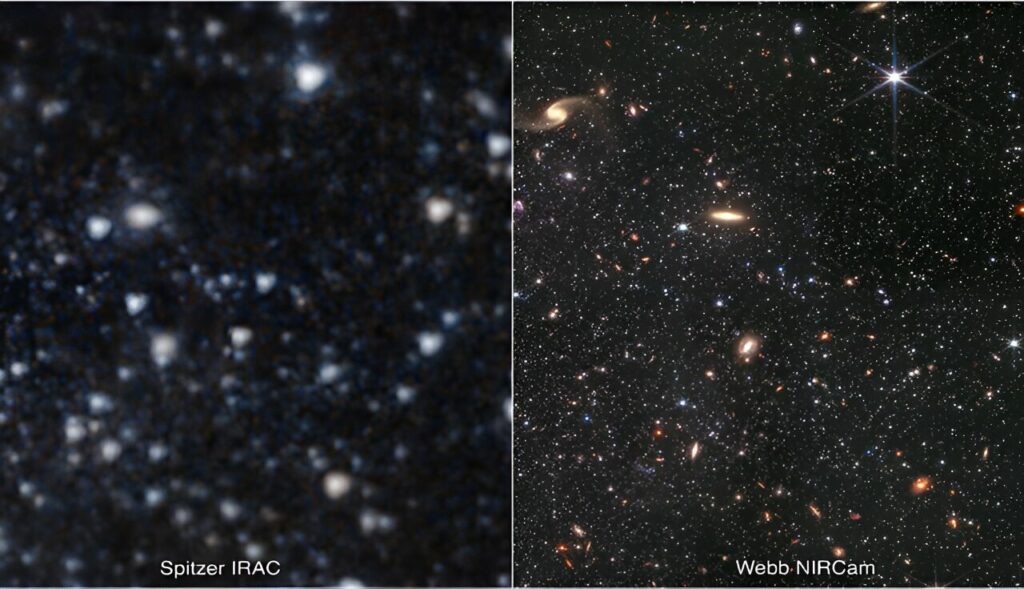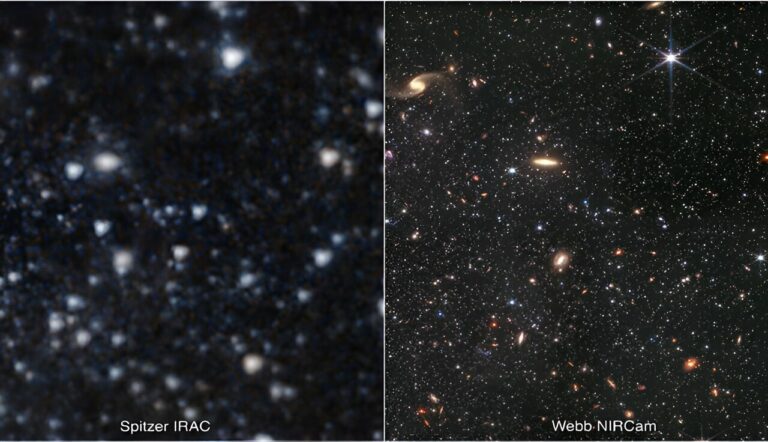In a Galaxy Closer Than We Think: Research Reveals Insights into Early Universe Conditions
A research team led by a Rutgers University–New Brunswick astronomer is utilizing the vast data sets collected by NASA’s James Webb Space Telescope to uncover valuable insights into the conditions that existed in the early universe. The team has meticulously documented the ages of stars in the Wolf–Lundmark–Melotte (WLM) galaxy, resulting in the most comprehensive depiction of it to date. WLM, which is situated near our own Milky Way, serves as a dynamic hub for the formation of stars, including those that originated a staggering 13 billion years ago.
Kristen McQuinn, an assistant professor in the Department of Physics and Astronomy in the School of Arts and Sciences at Rutgers, spearheaded this groundbreaking research, which has been detailed in The Astrophysical Journal. McQuinn expressed the significance of their findings, stating, “By delving so deeply and observing with such clarity, we have effectively transported ourselves back in time. It’s akin to embarking on an archaeological excavation, in search of the very low mass stars that emerged during the early stages of the universe.”
McQuinn acknowledged the pivotal role played by the Amarel high-performance computing cluster, overseen by the Rutgers Office of Advanced Research Computing, in facilitating the team’s calculations pertaining to the galaxy’s stellar evolution. Notably, one aspect of their research involved conducting a massive calculation and repeating it a staggering 600 times, as highlighted by McQuinn.

The extensive computational effort has also contributed to the validation of telescope calibrations and data processing procedures, which will have positive implications for the broader scientific community, she stated.
McQuinn has a particular interest in what are known as “low mass” galaxies. These galaxies are believed to have played a significant role in the early universe, making them valuable for studying star formation, the evolution of chemical elements, and the impact of star formation on a galaxy’s gas and structure. Despite being faint and scattered across the sky, they make up the majority of galaxies in our local universe. Advanced telescopes like the Webb are providing scientists with a closer look at these galaxies.
WLM, an “irregular” galaxy without a distinct shape like a spiral or ellipse, was first discovered by German astronomer Max Wolf in 1909. It was further characterized in 1926 by Swedish astronomer Knut Lundmark and British astronomer Philibert Jacques Melotte. Positioned on the outskirts of the Local Group, a group of galaxies that includes the Milky Way and has a dumbbell shape, WLM has been shielded from interactions with other galaxies. This isolation has preserved its star population in a pristine state, making it ideal for study. Additionally, WLM is intriguing to astronomers due to its dynamic nature and abundance of gas, which enables active star formation.
To determine the star formation history of WLM, which involves studying the rate at which stars have been born throughout different periods of the universe’s existence, McQuinn and her team meticulously focused on sections of the sky containing hundreds of thousands of individual stars using the telescope. They determined the age of each star by measuring its color, which serves as a proxy for temperature, as well as its brightness.
McQuinn explained that by utilizing our knowledge of stellar evolution and interpreting the colors and brightness of stars, we can effectively determine the age of the galaxy’s stars. The researchers then proceeded to count the stars of various ages and create a map illustrating the birth rate of stars throughout the history of the universe. This process ultimately provides us with an understanding of the age of the structure we are observing.
Through cataloging the stars in this manner, the researchers discovered that WLM’s ability to produce stars fluctuated over time. These findings align with previous assessments made by scientists using the Hubble Space Telescope, indicating that the galaxy produced stars during the early stages of the universe for approximately 3 billion years. Following a pause, star formation resumed.
McQuinn suggests that this pause may have been influenced by specific conditions present in the early universe. She explains that the high temperature of the universe at that time likely heated the gas within this galaxy, temporarily halting star formation. This cooling period lasted for several billion years before star formation recommenced.
This research forms part of NASA’s Early Release Program, which involves designated scientists collaborating with the Space Telescope Science Institute to conduct studies that showcase the capabilities of the Webb telescope and aid astronomers in preparing for future observations.
The Webb telescope was launched by NASA in December 2021 and is positioned a million miles away from Earth, orbiting the sun. Scientists compete for telescope time to investigate various subjects, including the conditions of the early universe, the history of the solar system, and the search for exoplanets.
McQuinn emphasizes that this program will yield a wealth of scientific discoveries that have yet to be explored. The study also involved other researchers from Rutgers University, including Max Newman, a doctoral student, and Roger Cohen, a postdoctoral associate, both from the Department of Physics and Astronomy at the Rutgers School of Arts and Sciences.
This article is republished from PhysORG under a Creative Commons license. Read the original article.
Do not forget to share your opinion with us to provide you with the best posts !




0 Comments